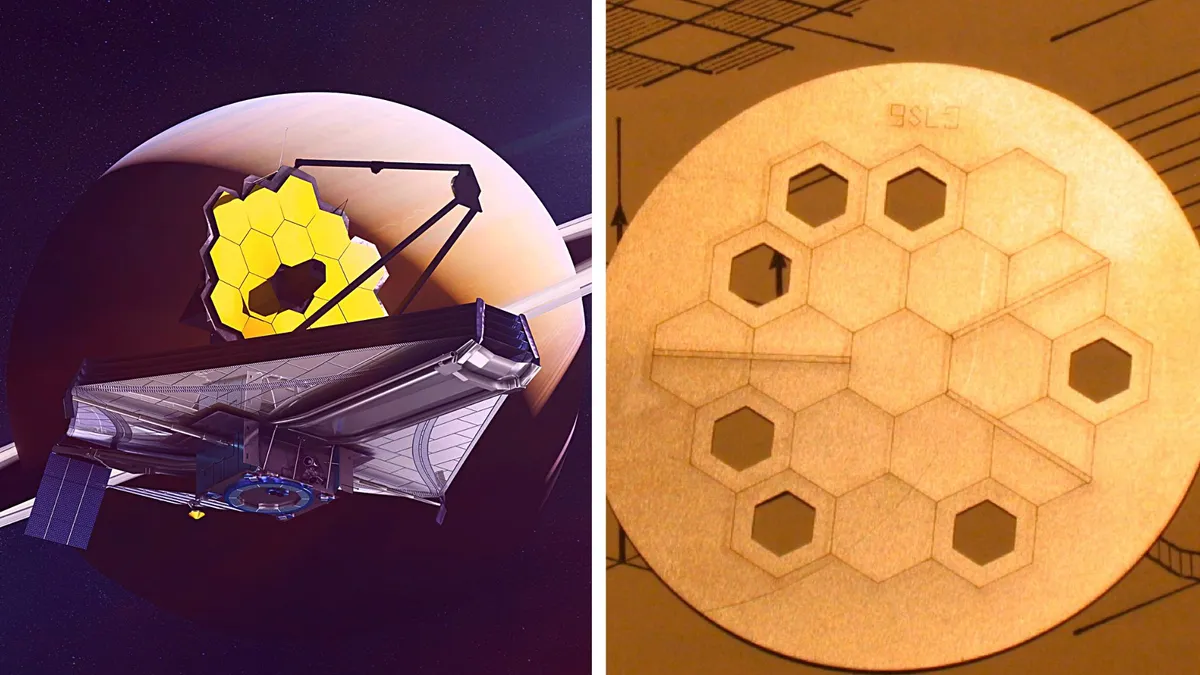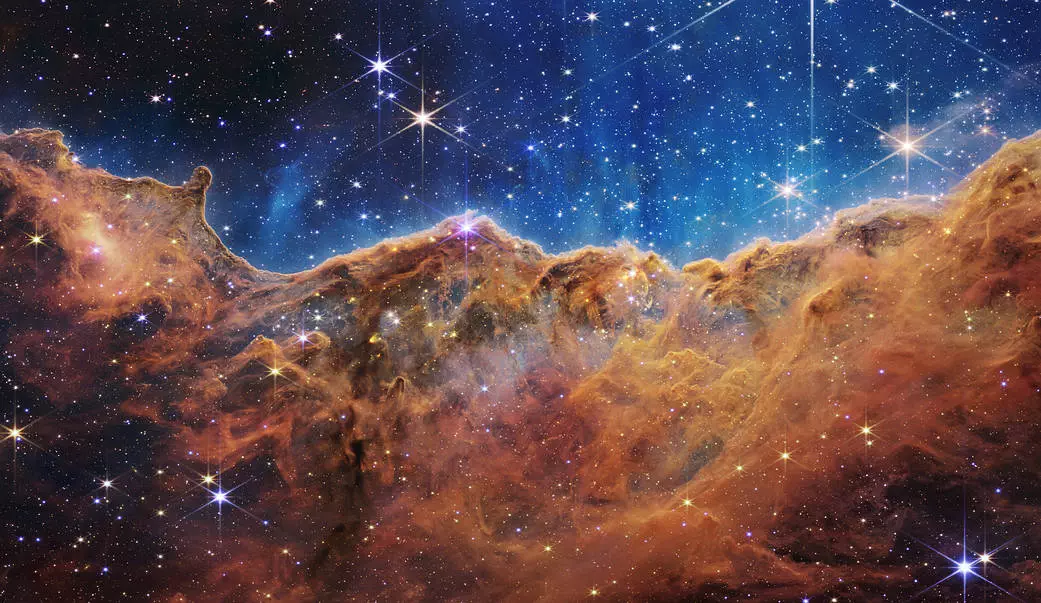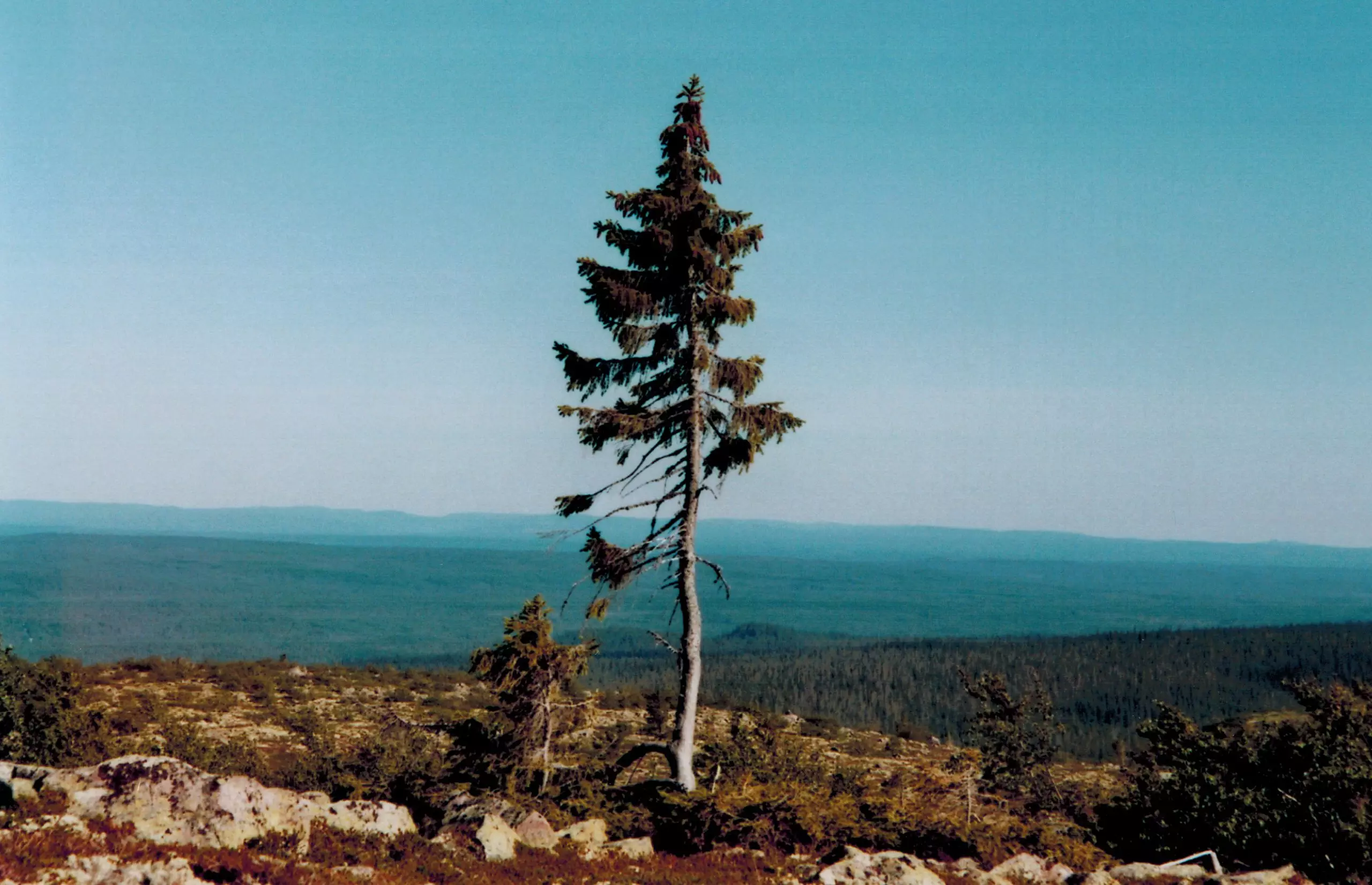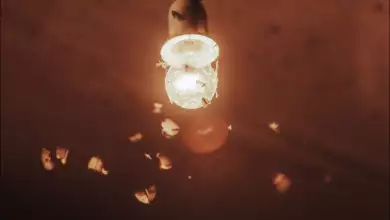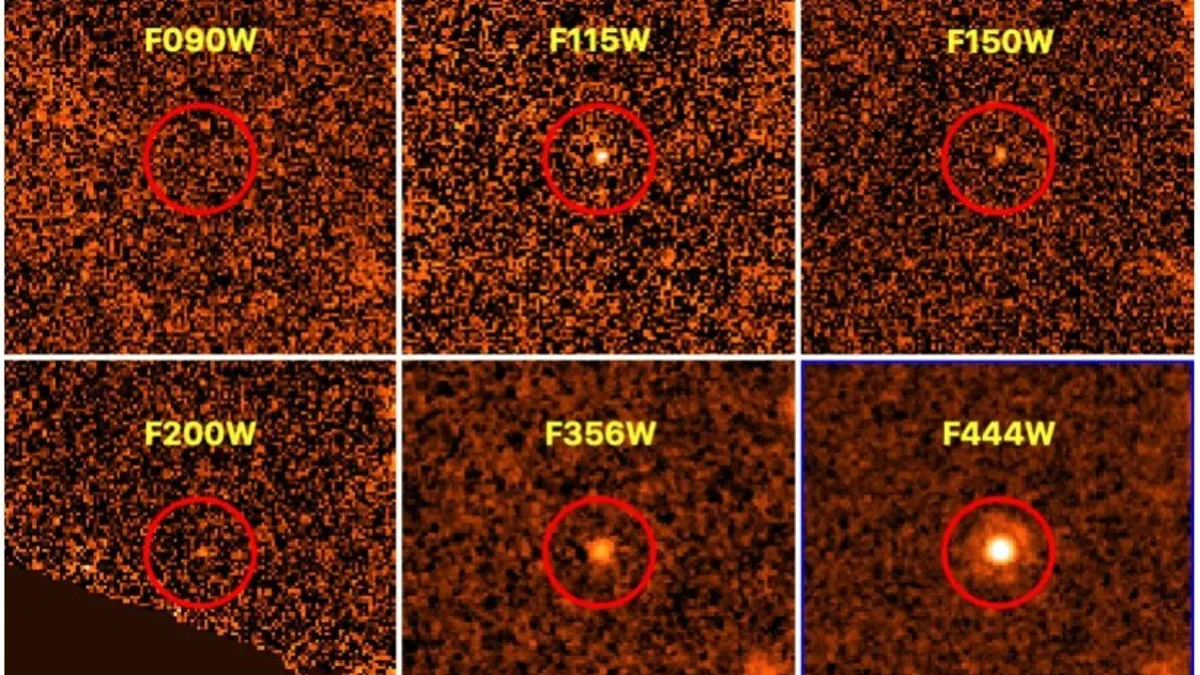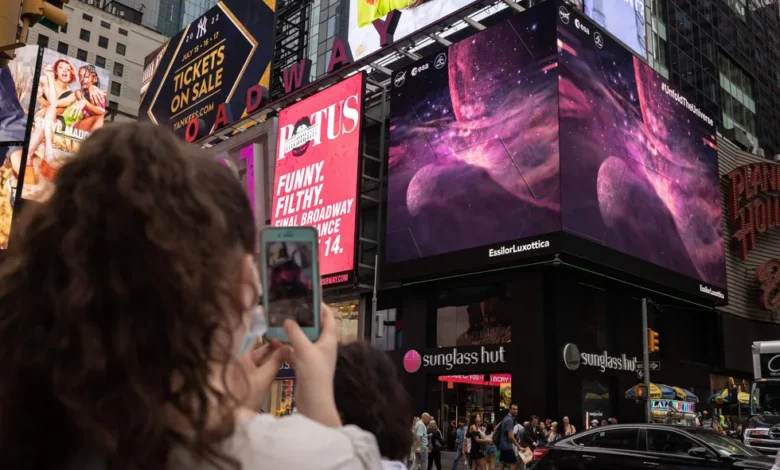
Galaxies brimming with stars and even evidence of supermassive black holes. It can be seen in stunning new photos unveiled by NASA and captured by its James Webb Space Telescope.
The Monday release of 19 images depicting spiraling galaxies comes nearly two years after the arrival of the first images captured by Webb. And a little more than two months after NASA’s counterpart in Europe released images from its groundbreaking telescope.
The collection depicts millions of stars clustered at galaxies’ cores in near- and mid-infrared light. Serving as the latest example of Webb’s astonishing capabilities to reveal distant, mysterious corners of our universe.
Related Article: James Webb’s First Photos
Mind-Blowing Galaxies: NASA James Webb Space Telescope Photos Reveals Unseen Details in Familiar Spirals
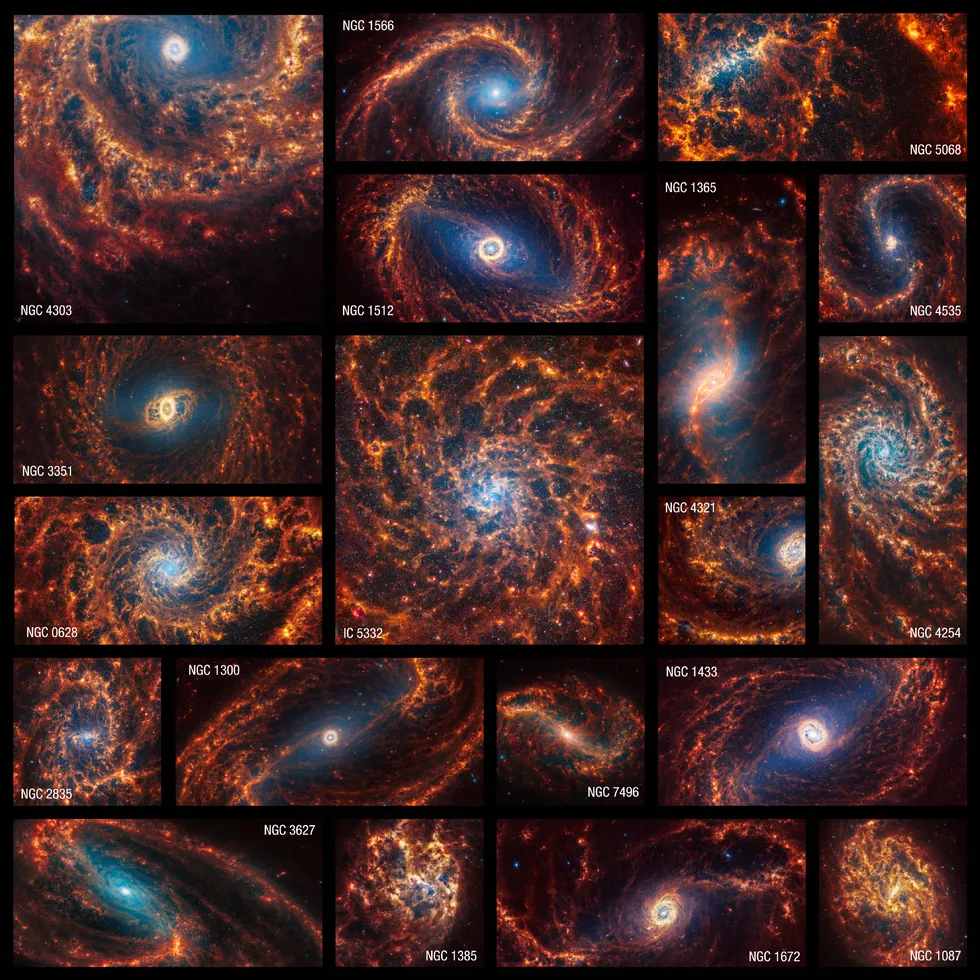
Moreover, in a statement, Janice Lee, a project scientist for strategic initiatives at the Space Telescope Science Institute in Baltimore,. He called the images “mind-blowing, even for researchers who have studied these same galaxies for decades.”
“Webb’s new images are extraordinary,” Lee said. “Bubbles and filaments are resolved down to the smallest scales ever observed. And tell a story about the star formation cycle.”
Also, astronomers have been observing these close spiral galaxies for decades. But this is the first time photographs of them have been made available to the public, according to NASA.
Related Article: James Webb takes a selfie of his giant gold mirror
Webb Unveils Stellar Secrets: Unveiling Star Birth and Dust Clouds in Spirals

Webb’s high-resolution photos, taken with a NIRCam (near-infrared camera), reveal millions of stars that shine in blue tones. Some stars are spread out along the spiral arms, while others are clumped together in star clusters.
Shades of orange and red indicate where the telescope’s MIRI (Mid-Infrared Instrument) detected luminous dust around and between stars. According to NASA, the MIRI also highlights stars that seem brilliantly red. Because they have not fully formed and are instead enveloped in gas and dust that aid in their growth.
“These are where we can find the newest, most massive stars in the galaxies,” Erik Rosolowsky, a physics professor at the University of Alberta in Edmonton, Canada, said in a statement.
Related Article: The James Webb Telescope is Searching for Life in Outer Space
Peering into the Origins of Stars: Webb Joins PHANGS to Unravel Galaxy Mysteries

Scientists also believe that certain galaxy cores with pink-and-red diffraction spikes indicate that these galaxies may have centrally active supermassive black holes.
The spiral galaxies are Webb’s first contributions to the Physics at High Angular Resolution in Nearby Galaxies (PHANGS) initiative, which is funded by over 150 scientists across the world.
Astronomers anticipate that analyzing these structures will reveal new information about how stars develop within galaxies.
Teams of academics are currently scrutinizing the photographs to determine the origins of these complex formations. NASA added that future studies will help mankind better comprehend not only star formation but also the evolution of spiral galaxies.
“Stars can live for billions or trillions of years,” Adam Leroy, an astronomy professor at Ohio State University in Columbus, stated. “By precisely cataloging all types of stars, we can build a more reliable, holistic view of their life cycles.”
Related Article: Oumuamua may help the James Webb Telescope find aliens
JWST’s Cosmic Treasure Trove: Unveiling Ancient Galaxies, Sand-Spewing Planets, and Black Hole Secrets
Since the James Webb Orbit telescope went into orbit in 2021, astronomers have increasingly relied on the powerful telescope to uncover new cosmic discoveries.
During Webb’s three years, the telescope has provided breathtaking images of our solar system’s planets, galaxies, stars, and other portions of the cosmos never before seen.
From ancient ghost galaxies to curiously synced circling planets, last year was jam-packed with cosmic discoveries made possible by Webb’s observations, which were made publicly available. Last year, Webb helped researchers discover more about intriguing star-orbiting exoplanets outside our solar system, including one that pours sand.
Scientists have also used Webb to help in the finding of exoplanets comparable to our own, as well as to unearth indications of a potentially habitable ocean world larger than Earth.
The powerful Webb telescope has also enabled scientists to gain vital insights into mysterious black holes.
Last year, astronomers pinpointed the earliest black hole ever observed, validating the notion that supermassive black holes existed in the early cosmos. The supermassive black holes formed 470 million years after the Big Bang and are ten times larger than our own Milky Way’s black hole.

